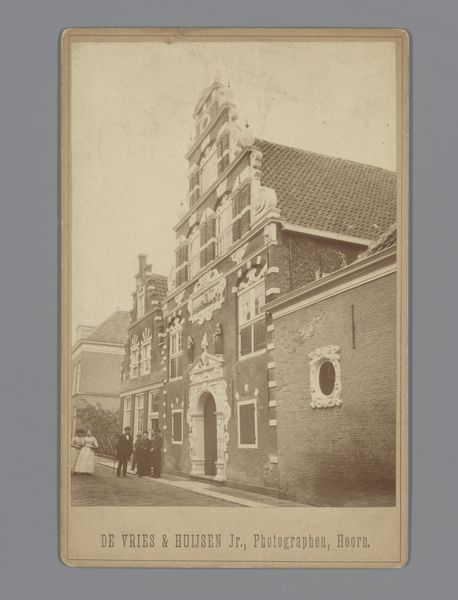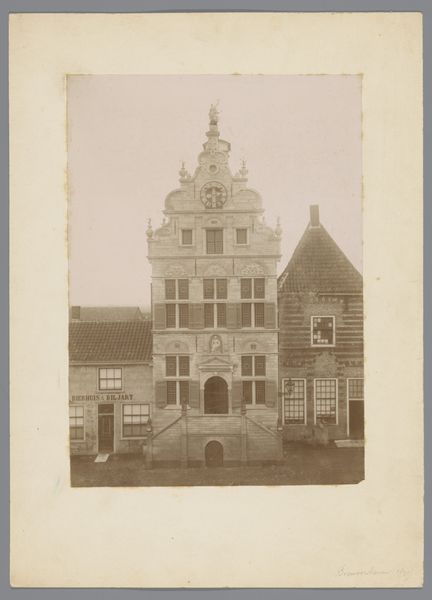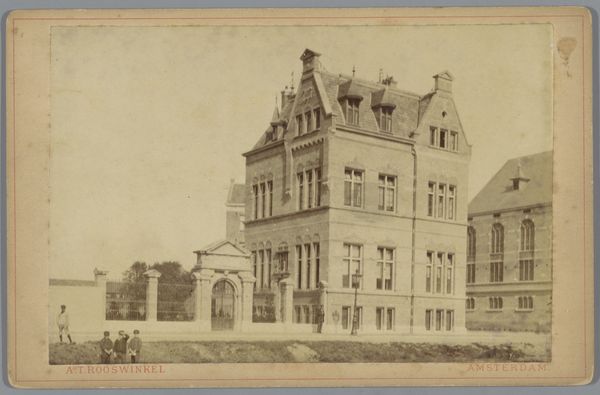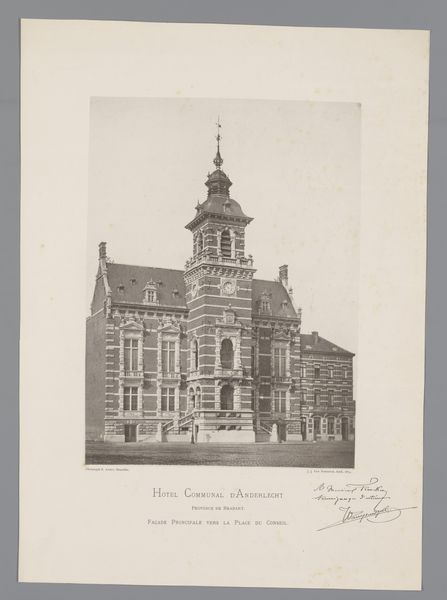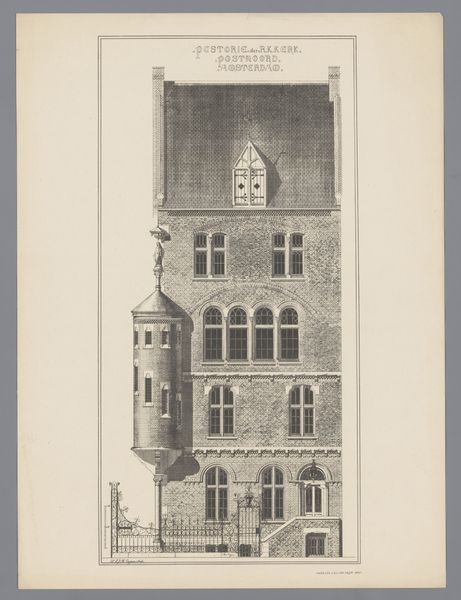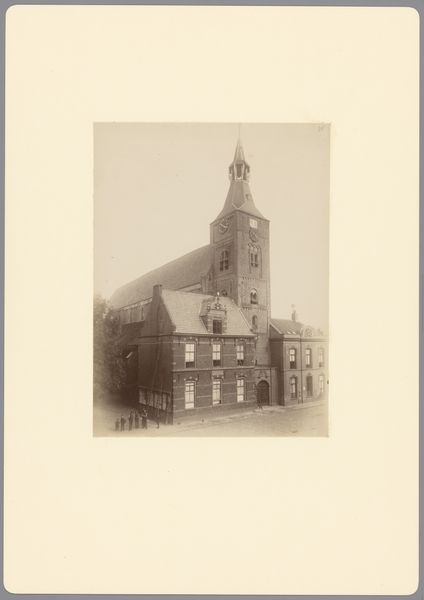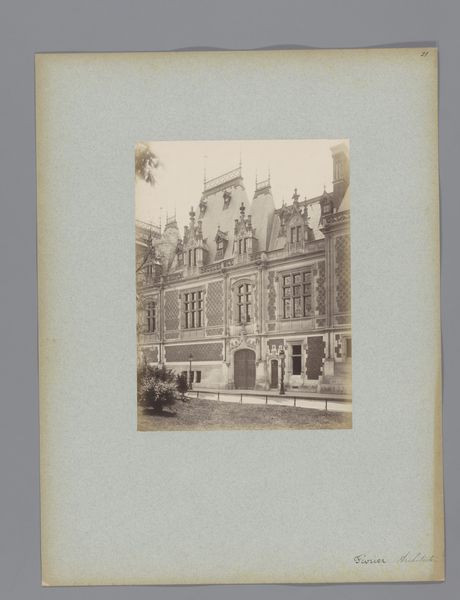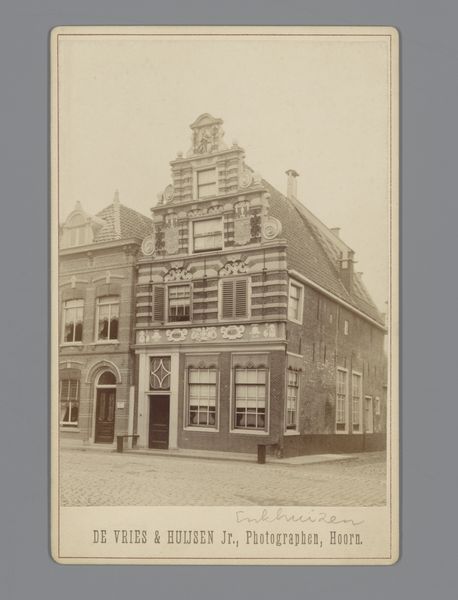
Nederlandse paviljoen op de Wereldtentoonstelling te Parijs in 1878 1878
0:00
0:00
print, photography, architecture
# print
#
photography
#
cityscape
#
history-painting
#
academic-art
#
architecture
#
realism
#
building
Dimensions: height 164 mm, width 107 mm
Copyright: Rijks Museum: Open Domain
This is Adolphe Block’s photograph of the Dutch pavilion at the 1878 World’s Fair in Paris. It’s a simple albumen print, a process that renders incredible detail. But the real story here is the building itself, a statement in brick and stone. The pavilion revives 17th-century Dutch classicism. This wasn't just about national pride; it was a claim about labor and value. The Netherlands was signaling its economic strength, rooted in traditional craftsmanship. Bricklaying, masonry, and carpentry – these were all highly valued skills. Consider the repetitive work to create the bricks, and how these materials and their assembly communicate cultural values. The pavilion's architecture emphasizes order and permanence. By showcasing these skills, the Dutch were making a statement about the value of their cultural heritage. It was a way of asserting identity in an increasingly industrialized world. Photographs like Block's remind us that materials, making, and context are intertwined. The pavilion embodies the social and economic values of its time, challenging any divide between art, craft, and national identity.
Comments
No comments
Be the first to comment and join the conversation on the ultimate creative platform.

